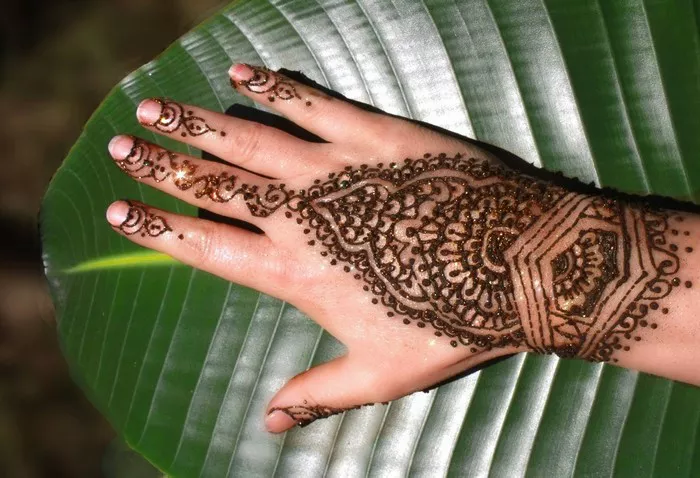Tattoos have long been a form of self-expression, with individuals choosing various body parts as canvases for their art. Among the more adventurous spots for tattoos are the fingers. However, the decision to get a finger tattoo often comes with questions about pain levels and considerations unique to this area of the body. In this article, we’ll explore the pain associated with finger tattoos, compare it to other body parts, discuss factors influencing pain intensity, offer tips for minimizing discomfort, delve into aftercare strategies, and consider long-term implications.
Pain Level
One of the primary concerns individuals have when contemplating a finger tattoo is the level of pain they can expect. It’s important to note that pain perception varies greatly among individuals, influenced by factors such as pain tolerance, psychological state, and previous experiences with tattoos or other forms of discomfort. However, getting a tattoo on the finger tends to be more painful compared to other body parts.
The fingers are densely populated with nerve endings, especially near the bone, making them particularly sensitive. Additionally, the skin on the fingers is relatively thin, which means there’s less tissue to cushion the needle’s impact. As a result, the sensation of getting a tattoo on the finger can be sharper and more intense.
Comparison with Other Body Parts
To put the pain of getting a finger tattoo into perspective, it’s helpful to compare it to other commonly tattooed body parts. Generally, areas with more flesh and muscle tend to be less painful because there’s more tissue to absorb the sensation. On the other hand, areas with less flesh, such as the fingers, ribs, and feet, can be more painful due to the proximity of bone and nerves.
When compared to less painful areas like the upper arm or thigh, the fingers rank higher on the pain scale. However, pain is subjective, and what may be tolerable for one person could be excruciating for another.
Pain Factors
Several factors contribute to the intensity of pain experienced during a finger tattoo session:
1. Individual Pain Tolerance: Each person’s pain threshold is unique. Some individuals may find the sensation manageable, while others may struggle with even mild discomfort.
2. Exact Finger Location: The location on the finger where the tattoo is placed can influence pain levels. Areas with less flesh, such as the sides or knuckles, may be more painful than the fleshy pad.
3. Tattoo Size and Complexity: Larger or more intricate designs require more time under the needle, which can amplify discomfort. Additionally, shading and color work may increase pain compared to simple line work.
Minimizing Pain
While it’s impossible to eliminate pain entirely, there are several strategies to help manage discomfort during a finger tattoo:
1. Choose an Experienced Tattoo Artist: Opt for a tattoo artist with experience in finger tattoos. Their expertise can ensure a smoother process and minimize unnecessary pain.
2. Use Numbing Creams: Topical numbing creams containing lidocaine can temporarily dull the sensation of pain. Apply the cream to the finger before the tattoo session as directed by the manufacturer.
3. Practice Proper Breathing Techniques: Deep breathing exercises can help relax the body and distract from the pain. Inhale deeply through the nose, hold for a few seconds, and exhale slowly through the mouth during the tattooing process.
4. Take Breaks if Necessary: Don’t hesitate to ask for breaks during the tattoo session if the pain becomes too intense. A short pause can provide much-needed relief and allow you to regroup mentally.
Aftercare
Once the tattooing process is complete, proper aftercare is crucial for reducing discomfort and promoting healing:
1. Follow the Artist’s Instructions: Your tattoo artist will provide specific aftercare instructions tailored to your finger tattoo. Follow these guidelines carefully to minimize the risk of infection and discomfort.
2. Keep the Tattoo Clean and Moisturized: Gently wash the tattoo with mild soap and water, then apply a thin layer of fragrance-free moisturizer to keep the skin hydrated. Avoid soaking the tattoo in water and exposing it to harsh chemicals or direct sunlight during the healing process.
3. Avoid Scratching or Picking: As the tattoo heals, it may itch or feel uncomfortable. Resist the urge to scratch or pick at the scabs, as this can damage the tattoo and prolong the healing process.
4. Attend Follow-Up Appointments: Depending on the tattoo’s complexity and how well it heals, you may need to schedule follow-up appointments with your tattoo artist for touch-ups or adjustments.
Long-Term Considerations
While finger tattoos can be visually striking, they come with unique long-term considerations:
1. Potential for Fading and Blurring: Due to the constant movement and exposure to friction, finger tattoos are more prone to fading and blurring over time. Touch-ups may be necessary to maintain the tattoo’s clarity and vibrancy.
2. Choosing Tattoo Design Wisely: Opt for simple designs with clean lines and minimal shading to minimize the effects of fading and blurring. Discuss design options with your tattoo artist to ensure longevity.
In conclusion, getting a tattoo on your finger can be a painful but ultimately rewarding experience. By understanding the factors influencing pain intensity, practicing proper aftercare, and considering long-term implications, you can make an informed decision about whether a finger tattoo is right for you. Remember to choose a skilled tattoo artist and prioritize your comfort throughout the process.

